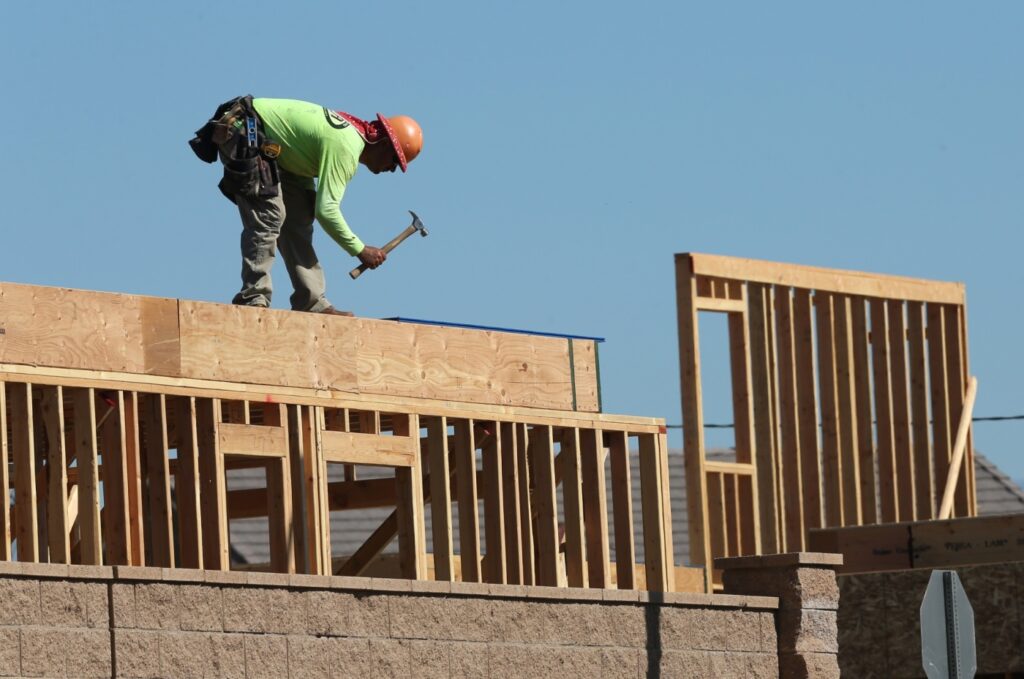
So how goes the war between the state and many — but not all — California cities over housing policy?
The war broke out a couple of years ago when the state Department of Housing and Community Development (HCD) ramped up pressure on local governments to accommodate more housing construction, citing “decades of underproduction underscored by exclusionary policies (that) have left housing supply far behind need and costs soaring.”
Spurred by new pro-housing laws, HCD issued much higher quotas on local governments to zone land for residential construction and created a special unit to enforce the goals. Attorney General Rob Bonta also weighed in, saying his office would crack down on cities that drag their feet.
The war escalated last year when the Legislature and Gov. Gavin Newsom enacted another law that allows duplexes to be built on lots zoned for single-family homes.
There has been a strong backlash to the state decrees from some cities, particularly those with wealthy residents, very expensive homes and little or no rental property. Their opposition has ranged from lawsuits challenging the validity of the new quotas to creative local decrees, such as Woodside’s abortive effort to declare itself a mountain lion refuge.
Woodside, with a median home value of $4.7 million, is typical of the communities where opposition to the zoning quotas and the duplex law is strongest. Residents of another bucolic San Francisco Peninsula suburb, Atherton, with a $7.9 million median home value, are also reacting strongly.
Last month, when Mayor Rick DeGolia and other city officials held a community meeting to describe how Atherton would comply with the new laws, residents reacted with raucous opposition, some demanding that the city refuse to comply and just pay the state’s penalties.
The war of words took another turn in March when the state auditor’s office issued a reportsomewhat critical of how the state housing agency calculated zoning quotas.
The auditor reviewed quotas for three California regions — Santa Barbara County, the Sacramento area and Amador County — and concluded they had some technical errors and/or lacked sufficient statistical backup for their assumptions.
“This insufficient oversight and lack of support for its considerations risks eroding public confidence that HCD is informing local governments of the appropriate amount of housing they will need,” acting auditor Michael Tilden said in a letter to the Legislature.
The department quickly agreed to correct errors and provide more data and while the relatively mild criticism was more a blip than a major setback, critics of the state’s quota program quickly cited it as vindication.
Related Articles
If students don’t return soon, community colleges are facing a financial crisis
Supervisors must remain focused on local issues: Katrina Foley
Honoring the life and legacy of Friedrich Hayek
We must do more to help victims of crime: George Gascón and Cristine Soto DeBerry
Free speech and trivial lawsuits
“I firmly believe that the auditor’s report raises enough questions that the state Legislature should look into this and possibly consider eliminating the penalties for not achieving the Regional Housing Needs Assessment mandates, especially if we might need to go back and redo them,” Novato Councilwoman Pat Eklund, a member of the California Alliance of Local Electeds, which pushed for the audit, told the Marin Independent Journal.
Marin County, which has the state’s highest personal incomes and has built very little new housing in recent decades, is a hotbed of opposition to zoning quotas, even though it obtained a partial exemption.
As the war continues, mostly in the courts, California also continues to lag behind in housing construction. Activity has picked up a bit in the last couple of years, but is still well short of the 180,000 units the state says are needed each year and is particularly deficient in multi-family rental housing for poor and moderate-income families, which are hardest hit by rising costs.
CalMatters is a public interest journalism venture committed to explaining how California’s state Capitol works and why it matters. For more stories by Dan Walters, go to calmatters.org/commentary.
